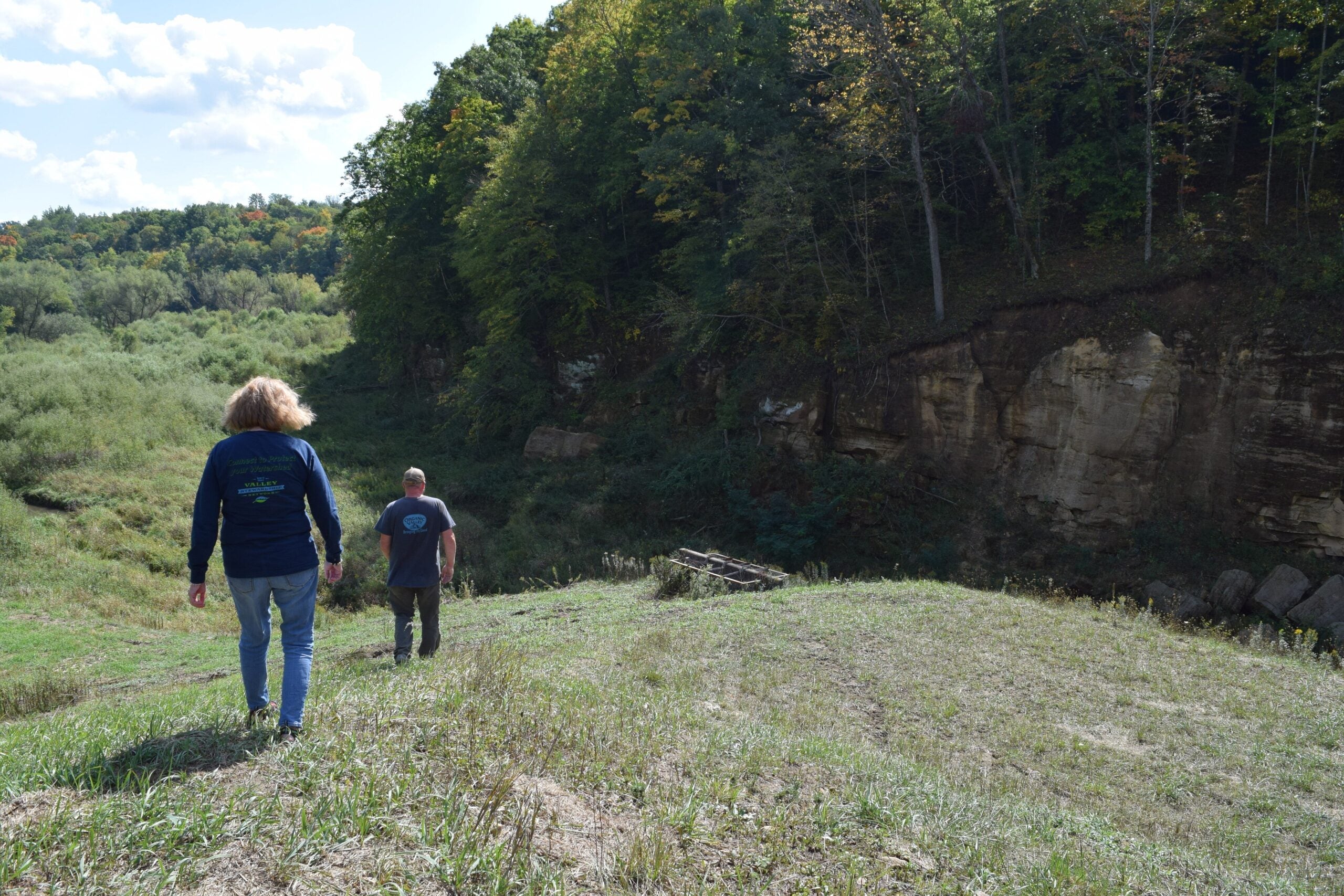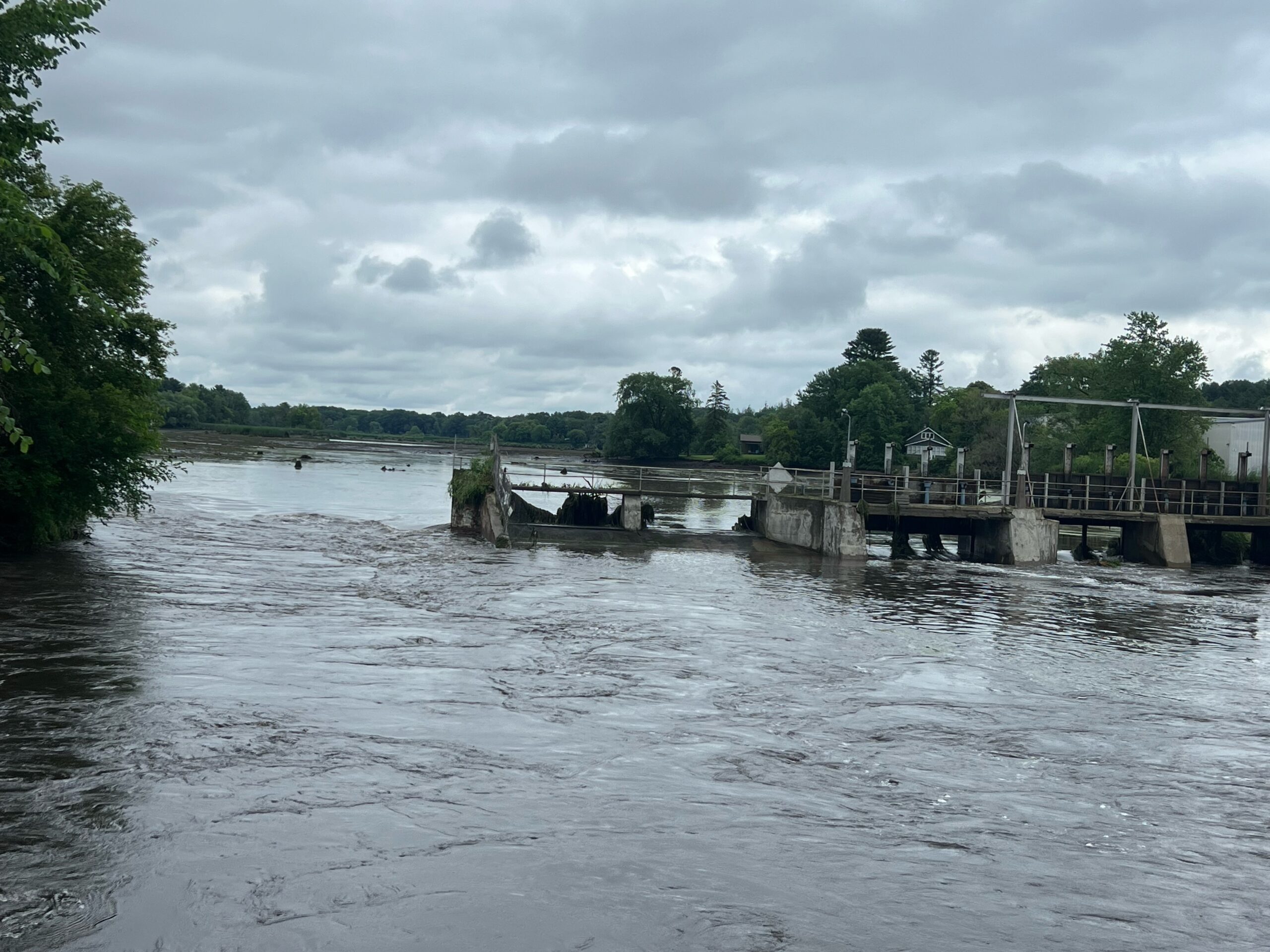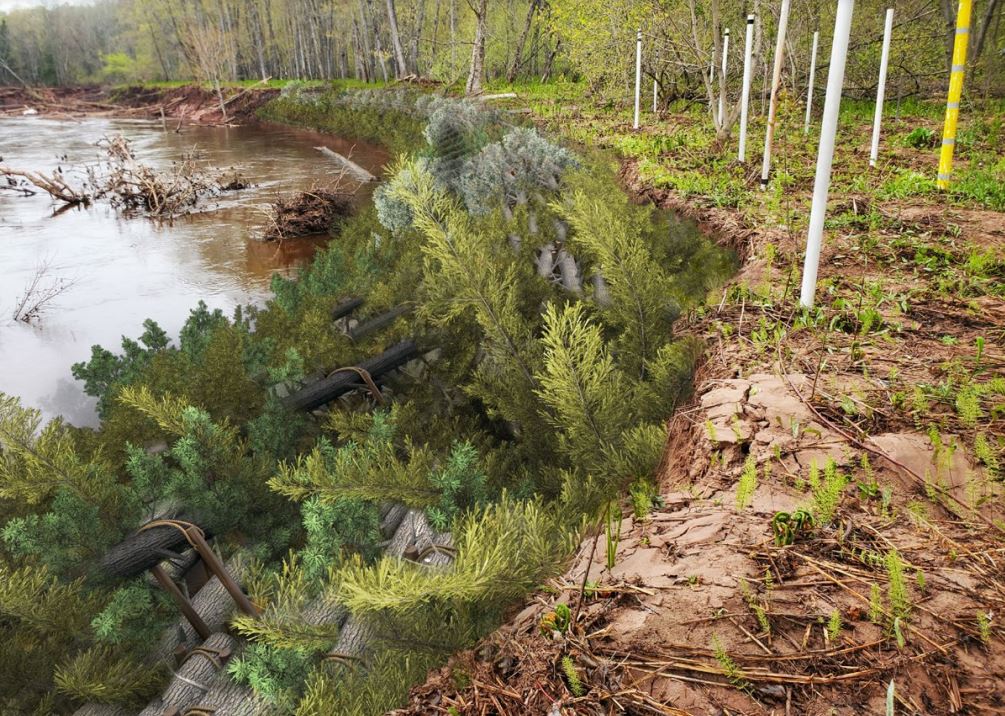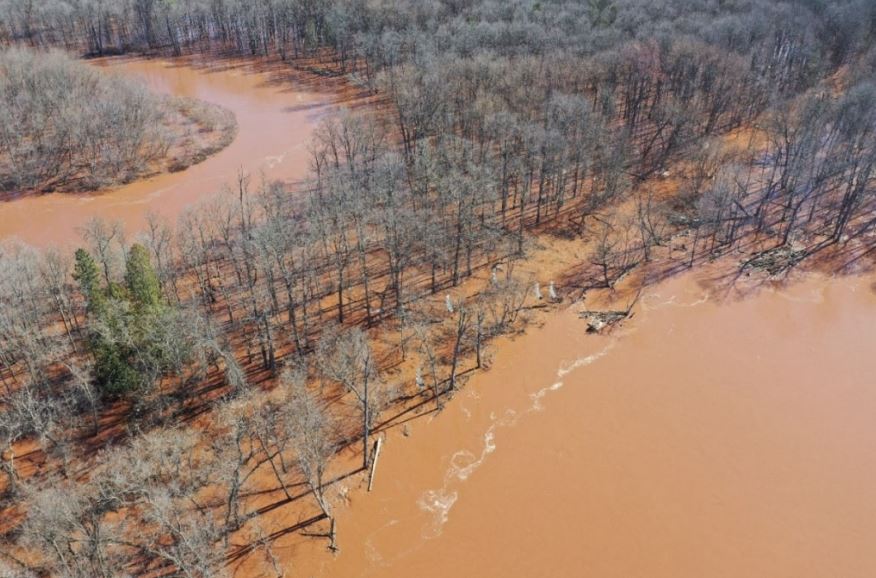Leaders in Vernon County approved federal plans Thursday to decommission 23 dams in Wisconsin’s Driftless Area after a handful failed during extensive flooding in 2018.
The Vernon County Board of Supervisors voted in favor of resolutions authorizing two plans prepared by the Natural Resources Conservation Service within the U.S. Department of Agriculture. They recommend decommissioning 14 dams in the Coon Creek Watershed and nine dams in the West Fork Kickapoo Watershed.
The decision comes as up to 12 inches of rain caused significant flooding six years ago this month. On the night of Aug. 27, 2018, the deluge caused five dams to fail, and runoff spilled over nine more across the two watersheds, sending floodwaters and debris surging downstream. In Vernon County, one tally put the total damage at an estimated $29 million.
Stay informed on the latest news
Sign up for WPR’s email newsletter.
Prior to the vote, some residents like Dean Daniels of Westby voiced concerns about removing the dams. Daniels lives just south of the Garlic Dam in Vernon County.
“It just makes me a little nervous,” Daniels said. “We’re downstream less than 100 yards from that dam, and I don’t think anybody knows for sure what’s going to happen if that dam is removed.”
The Natural Resources Conservation Service conducted a roughly $1.8 million study of earthen dams within the two watersheds following the 2018 flood. The grass-covered structures were first built from 1956 to 1971, and they range between 25 and 40 feet tall. They were initially designed to hold back and slow the release of floodwaters.
The cost to decommission the 14 dams within the Coon Creek Watershed is estimated at $4.4 million. In the West Fork Kickapoo Watershed, it will cost about $7.8 million to remove nine dams and roughly $17.7 million to replace the Jersey Valley dam.
Steve Becker, the agency’s state conservation engineer, said the major reason the plans recommend decommissioning the dams is because all are at risk of failing.
“Our geologists and our geotechnical engineers, they looked at all the dams, and they share that same what we call a ‘geotechnical vulnerability.’ They were all built on that fractured sandstone, so they’re all vulnerable to a future failure,” Becker said.
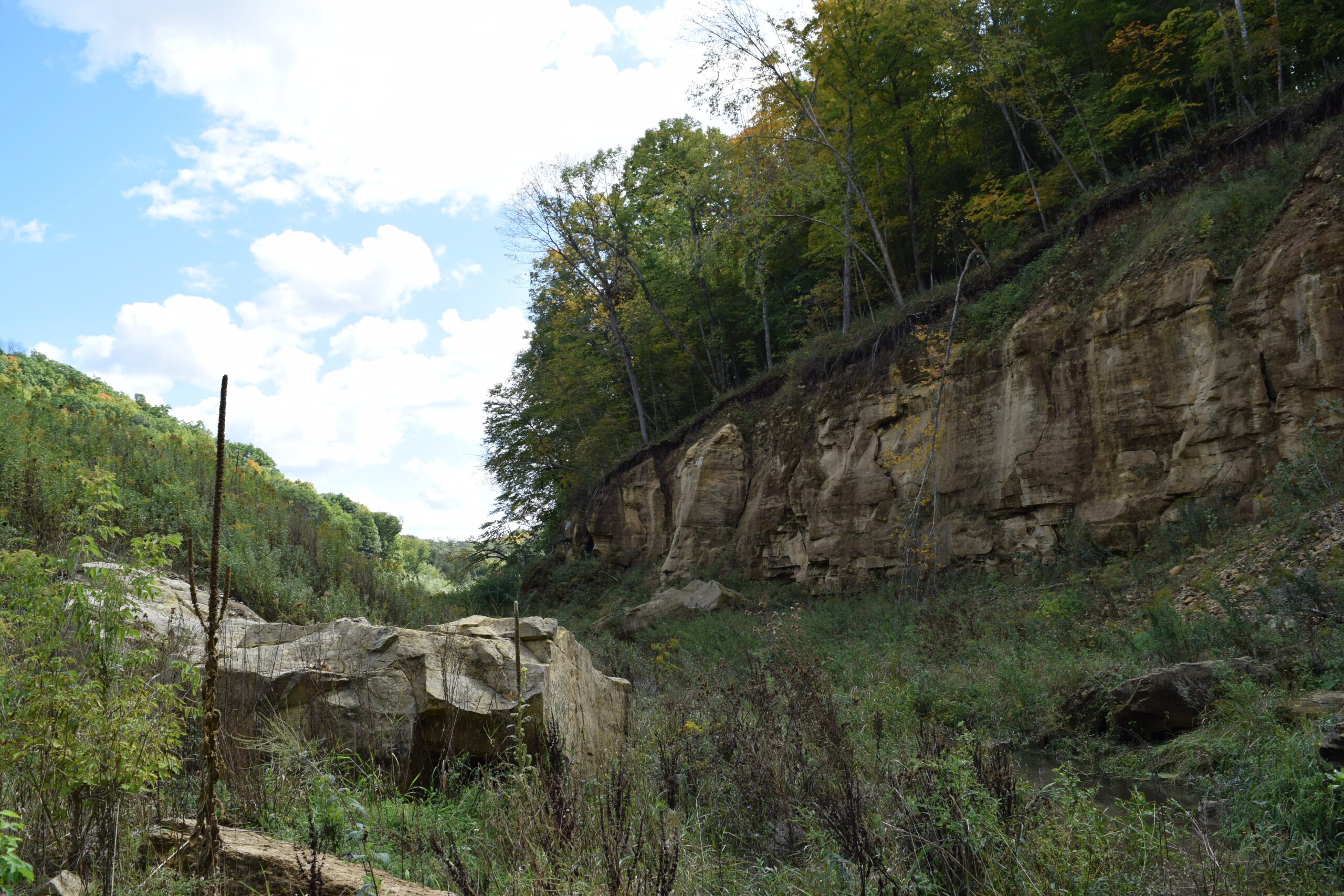
Becker said it was water moving through the sandstone fractures that caused five dams to breach in 2018. Extreme storms that can lead to significant flooding are only becoming more frequent and intense, according to state climate scientists.
Since 1950, average precipitation in the state has increased nearly 20 percent, according to a report from the Wisconsin Initiative on Climate Change Impacts. Southern Wisconsin has experienced the highest increase in precipitation.
‘When they go out, they’re damn scary’
Vernon County Board Supervisor Dave Eggen cited the increase in extreme rainfall as he argued against removing dams in the town of Christiana. He said that everyone would shoulder the burden of future disasters once they’re removed, saying there’s no backup plan.
“I would rather deal with one disaster every 10 years than 10 disasters every year,” Eggen said.
But Vernon County Board Supervisor Frank Easterday recalled debris six to eight feet deep below the Jersey Valley dam during the 2018 flood.
“Everybody is here talking about keeping these dams, and I get it. I understand when they work, they work. But when they go out, it’s 10 times worse than a regular flood,” Easterday said. “That’s what you have to think about. I’ve lived through it. I’ve seen the dams work fairly well. But when they go out, they’re damn scary.”
Vernon County Conservationist Ben Wojahn acknowledged the dams have yielded benefits for flood control.
“I do understand the concerns,” Wojahn said. “I can’t say that I’m giddy or ecstatic about removing the dams, but at this place and time in history, the study has made it clear that the cost-benefit analysis is not there to repair or replace these large dam structures.”
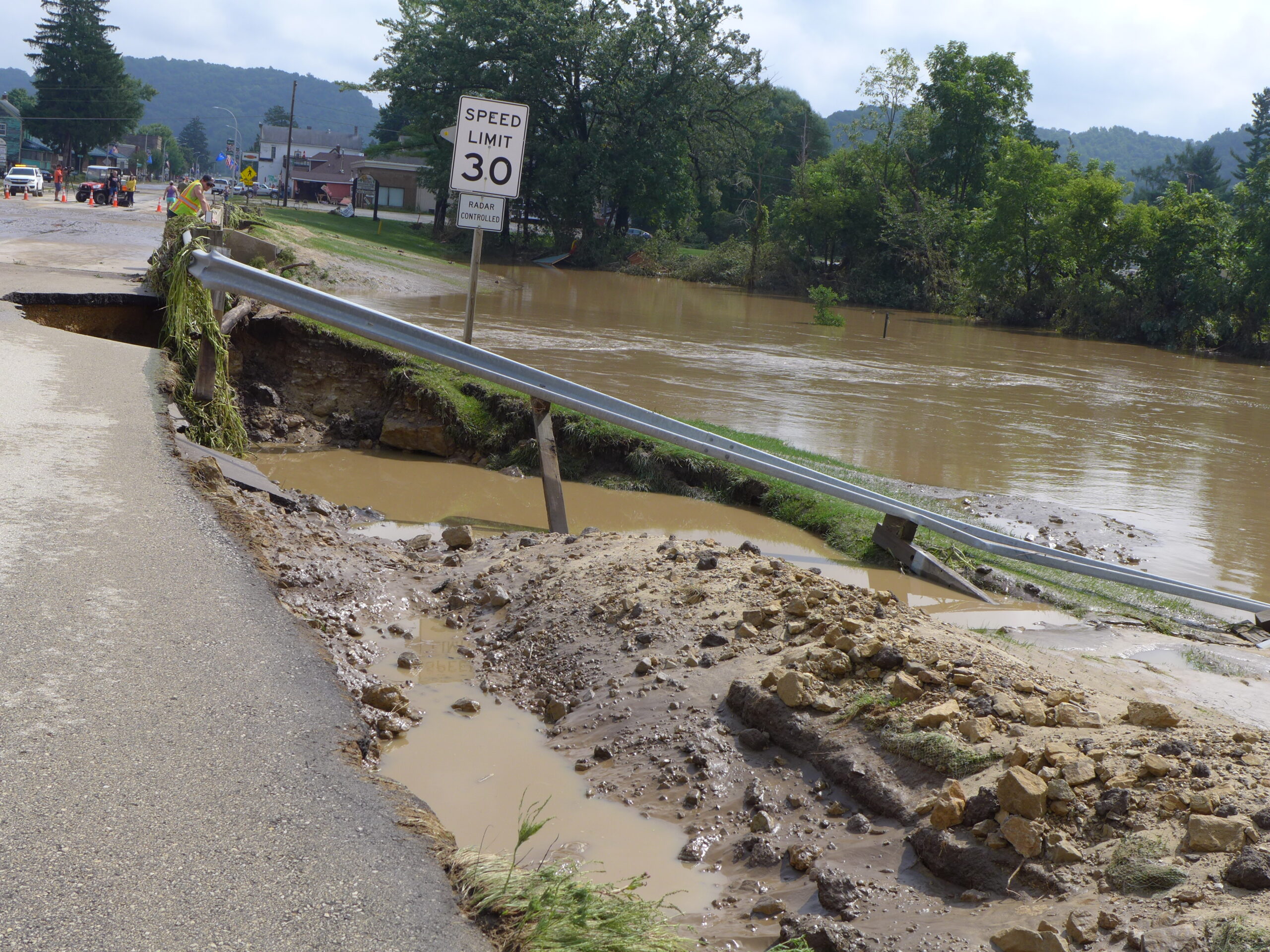
Becker said a team calculated the environmental and economic impacts of the dams since their construction, using storm data from the last 60 years. He said the dams have brought about 90-cents in flood control benefits for every dollar spent on construction and maintenance.
However, projections show that the cost of replacing dams to current standards would run about $4.2 million per dam. That means the costs of constructing new dams far outweigh the benefits that they would provide over the next 50 years.
While most of the 23 dams are located in Vernon County, nine dams reside in Monroe and La Crosse counties. County boards will vote on resolutions to approve federal plans for decommissioning the dams in the coming weeks.
Becker said he expects both counties will approve the resolutions. Once approved, he said the agency will sign a watershed agreement with the counties and allocate funds to begin the design process, which is expected to take about 18 months.
Wisconsin Public Radio, © Copyright 2025, Board of Regents of the University of Wisconsin System and Wisconsin Educational Communications Board.
